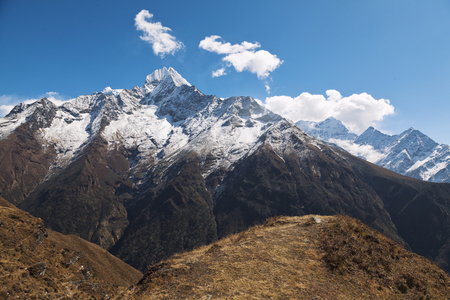Understanding Terrain Types and Challenges
When planning a camping trip, one of the first things to consider is the type of terrain you’ll be dealing with. Each landscape—whether it’s a dense forest, arid desert, rugged mountain, or something else—presents its own unique features and challenges. Knowing what to expect helps you select the safest and most comfortable campsite while also preparing for any obstacles you might encounter. Let’s break down some common terrain types found across the United States and see how they can affect your camping experience.
Key Terrain Types
| Terrain Type | Main Features | Common Challenges |
|---|---|---|
| Forests | Tall trees, lots of shade, underbrush, uneven ground | Falling branches, limited sunlight, bugs, dampness |
| Deserts | Sandy or rocky soil, little shade, extreme temperature swings | Lack of water, intense sun exposure, cold nights, wind-blown sand |
| Mountains | Steep slopes, rocky surfaces, variable weather, high elevation | Landslides, altitude sickness, sudden weather changes, unstable ground |
| Grasslands/Plains | Flat or gently rolling land, open skies, few trees | Exposure to wind and storms, lack of natural shelter or firewood |
| Lakeshores/Riversides | Proximity to water, soft soil or sand, wildlife activity | Flood risk, insects (like mosquitoes), muddy ground |
The Impact on Campsite Selection and Preparation
The characteristics of each terrain will shape how you pick your campsite and get it ready for overnight stays. For example:
- Forests: Look for clearings to avoid falling branches (“widowmakers”), and consider moisture levels in low-lying spots.
- Deserts: Prioritize shade during the day and wind protection at night; always check for flash flood risks in washes or arroyos.
- Mountains: Seek level ground away from cliff edges and watch out for rockfall areas. Prepare for cooler temperatures at higher elevations.
- Lakeshores/Riversides: Camp at least 200 feet from water sources to minimize flood danger and protect fragile ecosystems.
- Grasslands/Plains: Set up near natural windbreaks like bushes or small rises if possible since these areas offer little shelter.
Takeaway: Know Before You Go
No matter where you camp in the U.S., understanding your terrain is key. Different environments can change everything from what gear you pack to how you pitch your tent. In the next sections, we’ll dive deeper into how to choose and prepare the best campsite for each type of landscape.
2. Essential Site Selection Criteria
Choosing the right campsite is key to a safe and enjoyable outdoor experience, no matter if you’re in dense forests, open deserts, or rugged mountains. Here are the most important things to look for when picking your spot:
Access to Water
Having water nearby is super handy for drinking, cooking, and cleaning. Aim for a site that’s close to a water source like a stream or lake, but not too close—about 200 feet away helps protect the water from contamination and keeps bugs at bay.
Natural Hazards
Always scan the area for potential dangers before setting up camp. Here’s a quick checklist:
| Hazard | What to Watch For | Why It Matters |
|---|---|---|
| Falling Branches (Widowmakers) | Dead trees or loose limbs overhead | Can fall unexpectedly and cause injury |
| Flooding Risk | Dips, dry creek beds, or low-lying areas | May flood quickly during rainstorms |
| Wildlife Trails | Animal tracks or droppings nearby | Avoid setting up on active wildlife routes |
| Rockfall Zones | Loose rocks above camp in mountain terrain | Risk of falling rocks during wind or storms |
Weather Exposure and Shelter
The right campsite offers protection from harsh weather. In forests, look for natural windbreaks like clusters of trees. In deserts, try to find shade under rock formations. In mountains, avoid exposed ridgelines—pick a spot that’s sheltered from strong winds but not in a low spot where cold air settles overnight.
Shelter Checklist:
- Wind: Set up behind natural barriers if possible.
- Rain: Avoid depressions where water can pool.
- Sun: Seek shade in hot climates.
- Cold: Stay off valley floors where cold air collects.
Leave No Trace Principles
Caring for nature means leaving your campsite as good—or better—than you found it. Follow these Leave No Trace basics:
- Select Durable Surfaces: Camp on established sites, rock, gravel, or dry grass when you can.
- Avoid Fragile Areas: Steer clear of meadows and wetlands that are easily damaged.
- Packed Out Trash: Bring all your trash back out with you.
- No Digging Trenches: Modern tents don’t need trenches; disturbing soil can harm plants and animals.
Campsite Comfort Tips
The perfect spot isn’t just about safety—it’s also about comfort! Look for level ground so you don’t roll around at night, and keep some distance from other campers for privacy and peace. If there are bugs, set up camp in breezier spots away from standing water.
![]()
3. Campsite Preparation Techniques for Forests
Clearing and Leveling Ground
When setting up camp in a forest, picking the right spot is step one. Look for flat ground that’s not in a low-lying area where rainwater could collect. Remove sticks, rocks, pinecones, and other debris from your tent area to prevent discomfort and protect your gear. Use your hands or a small camp broom; never dig trenches—this can damage the environment and is frowned upon in most U.S. parks.
Forest Campsite Ground Prep Tips
| Task | Why It Matters | How To Do It |
|---|---|---|
| Remove Debris | Protects tent floor & comfort | Clear sticks, stones, pinecones by hand |
| Level Surface | Avoids sliding during sleep | Smooth out lumps with feet or hands |
| Avoid Digging | Protects plant roots & soil | No trenching; use a tarp if needed |
Protecting Against Wildlife
Forests are home to critters like raccoons, squirrels, bears, and insects. Store all food and scented items (like toothpaste) in a bear canister or hang them at least 10 feet above ground and 4 feet from the trunk of a tree. Never leave food scraps or trash around; it attracts animals and can be dangerous for both you and wildlife.
Wildlife Safety Checklist
- Keep a clean camp: Pack away all food before dark.
- Use bear-proof containers when required.
- Hang food bags with sturdy rope if containers aren’t available.
- Avoid cooking near your tent—set up a “kitchen” area at least 200 feet away.
- Dispose of waste properly—follow Leave No Trace principles.
Minimizing Environmental Impact
Campsites in forests should blend into the landscape and leave little trace behind. Stick to established campsites whenever possible—they’re designed to minimize damage to plants and soil. Use portable stoves instead of building fires unless there’s an established fire ring. If you must build a fire, keep it small, use only downed wood, and make sure it’s completely out before leaving.
Forest Camping Best Practices Table
| Do This | Avoid This |
|---|---|
| Camp on durable surfaces (dirt, gravel) | Tenting on fragile moss or plants |
| Pack out all trash & leftover food | Burying or burning trash/food scraps |
| Use existing fire rings if allowed | Making new fire pits or scars on the ground |
| Bury human waste 6-8 inches deep & 200 feet from water sources (where permitted) | Leaving waste exposed or too close to streams/lakes |
By following these simple techniques for campsite preparation in forests, you’ll help protect America’s wild places for future campers while having a safer and more comfortable experience yourself.
4. Surviving and Thriving in Deserts and Mountainous Terrain
Finding the Right Campsite in Harsh Environments
Camping in deserts and mountainous regions can be an amazing experience, but these areas come with unique challenges. Here’s how you can find a safe, comfortable campsite and stay prepared for whatever Mother Nature throws your way.
Locating Shade and Shelter
Deserts: In hot, arid landscapes, shade is your best friend. Look for natural features like boulders, rock outcroppings, or even the shadow of a canyon wall. If you’re arriving later in the day, notice where the sun sets so you can position your tent to get morning or afternoon shade.
Mountains: In higher elevations, trees may be scarce. Seek out groves of pines or use large rocks as windbreaks. Avoid valleys where cold air can settle overnight—pick spots on gentle slopes or ridges for better airflow.
Quick Reference Table: Shade & Shelter
| Terrain | Best Shade Sources | Shelter Tips |
|---|---|---|
| Desert | Boulders, canyon walls, tarps | Avoid washes (flash floods); set up early for shade |
| Mountain | Trees, rock formations | Avoid exposed peaks; use windbreaks for tents |
Securing Your Tent in Windy Conditions
Wind is a big factor in both deserts and mountains. Always stake down your tent securely and use all available guy lines. In rocky ground, use heavy rocks to anchor corners if stakes won’t hold. Face the lowest profile of your tent into the wind to minimize flapping and possible damage.
Managing Water and Temperature Extremes
- Water in Deserts: Camp near reliable water sources if possible—but not too close (at least 200 feet away) to avoid disturbing wildlife or risking contamination. Carry extra water—don’t rely on finding it along the way!
- Water in Mountains: Streams may freeze at night or run dry by late summer. Always treat water before drinking and plan ahead by checking local conditions.
- Temperature Swings: Both environments can have huge temperature differences between day and night. Bring layers—including a warm hat and insulated jacket for mountain nights, and lightweight, breathable clothing plus sun protection for desert days.
Packing Essentials Table: Desert vs Mountain Campsites
| Item | Desert Must-Have? | Mountain Must-Have? |
|---|---|---|
| Tarp/Sunshade | Yes—for shade | No—but good as extra shelter from rain or snow |
| Extra Water Storage | Essential—carry more than you think youll need | Important—especially above tree line where sources are scarce |
| Tent Stakes/Heavy Rocks | Certainly—windy and sandy soils require creative anchoring | Certainly—rocky ground means strong anchors are needed |
| Warm Layers (Jacket/Hat) | Nights can get chilly—bring light insulation just in case | A must—mountain temps drop quickly after sunset |
| Sunscreen/Sunglasses/Hat | Absolutely—UV is intense in open areas | Absolutely—higher altitude means stronger sun exposure too! |
The key to a successful campout in deserts or mountains is preparation. Know your environment, pack smart, and always have a backup plan for weather changes. With these tips, you’ll be able to enjoy some of America’s wildest landscapes with confidence!
5. Packing Essentials and Pro Tips for American Campgrounds
Must-Have Gear for Different Terrains
Packing the right gear is crucial when camping across diverse American landscapes, whether youre in the forest, desert, mountains, or by a lake. Here’s a handy table to help you pack smart:
| Item | Forests | Deserts | Mountains | Lakesides |
|---|---|---|---|---|
| Tent (with stakes) | ✔️ Bug mesh recommended | ✔️ Ventilation needed | ✔️ 4-season tent if cold | ✔️ Waterproof bottom |
| Sleeping bag | ✔️ Moderate warmth | ✔️ Lightweight, breathable | ✔️ Extra insulation | ✔️ Water-resistant cover |
| Campsite tarp/footprint | ✔️ For damp ground | ✔️ For sharp rocks/sand | ✔️ For rocky soil | ✔️ For mud/water protection |
| Sunscreen & hat | Optional (dappled shade) | Essential (no shade) | Important (higher UV) | Recommended (reflection) |
| Bug spray/repellent | Essential (mosquitoes) | Sometimes needed (flies) | If near water/meadows | Essential (mosquitoes/gnats) |
| Water filtration/purification system | If no potable water source | If no potable water source | If no potable water source | If no potable water source |
| Camp stove/cookware | Check fire restrictions! | No open flames; use stove only | Wind shield for stoves needed | Bears may be present – store food securely! |
Amenities You’ll Find at U.S. Campgrounds
- Restrooms: Most developed campgrounds offer flush toilets or vault toilets.
- Picnic Tables & Fire Rings: Standard at most sites. Always check local fire bans.
- Piped Water: Usually available, but bring extra just in case.
- Bears Boxes: Common in mountain and forest areas where bears roam.
- Dumpsites: Available for RVs at many sites.
Packing List for U.S. Campsites: Quick Reference Table
| Packing Item Category | Examples / Notes |
|---|---|
| Shelter & Sleeping Gear | Tent, sleeping pad, sleeping bag, pillow |
| Campsite Comforts | Tarp/groundsheet, camp chairs, lantern/headlamp |
| Kitchens & Food | Coleman stove, propane/fuel, utensils, cooler with bear-proof lock if required |
| Campsite Clothing | Synthetic/wool layers, rain jacket, sturdy boots/shoes, sun hat |
| Navigational Aids | Papermap of park/trail, compass/GPS device |
| Sundries & Safety | Sunscreen, bug spray, first aid kit, pocketknife/multi-tool |
American Outdoor Etiquette: The Basics for a Great Experience
Leave No Trace Principles:
- Packed-in = packed-out: Don’t leave trash behind—bring garbage bags for all your waste.
- Avoid disturbing wildlife: Never feed animals; keep a safe distance from all critters.
- Respect quiet hours: Many campgrounds have posted quiet times—be mindful of neighbors!
- No cutting live trees: Use only dead/downed wood where collecting is allowed or bring your own firewood to prevent spreading pests.
- If you bring pets: Keep them leashed and clean up after them everywhere.
- Campsite selection: Set up only on designated pads or durable surfaces to protect nature.
- If you use soap: Always use biodegradable soap at least 200 feet from lakes or streams.
- Campsite fires: Only build fires in provided rings and always fully extinguish before leaving or sleeping. Check current fire regulations—restrictions are common in dry seasons!
- If there’s a bear box: Store all scented items inside—including toothpaste and snacks—even if you don’t see bears around.
- Tipping camp hosts isn’t expected—but a friendly chat and gratitude go a long way!
The right gear and good campground manners make all the difference. Happy camping!


